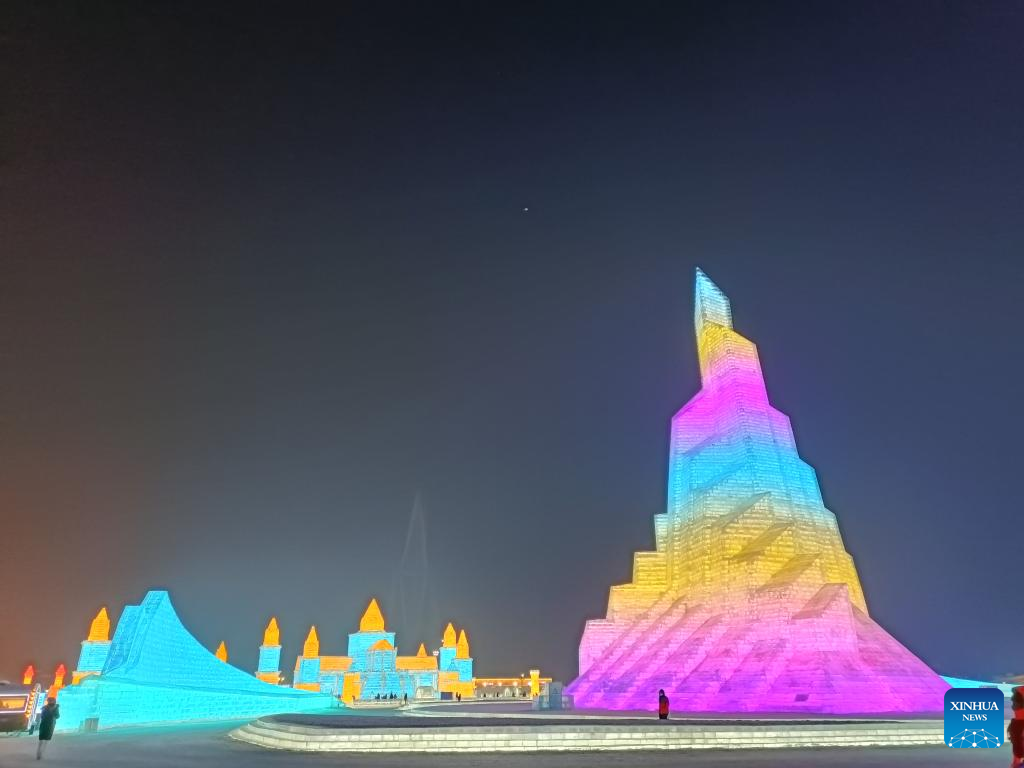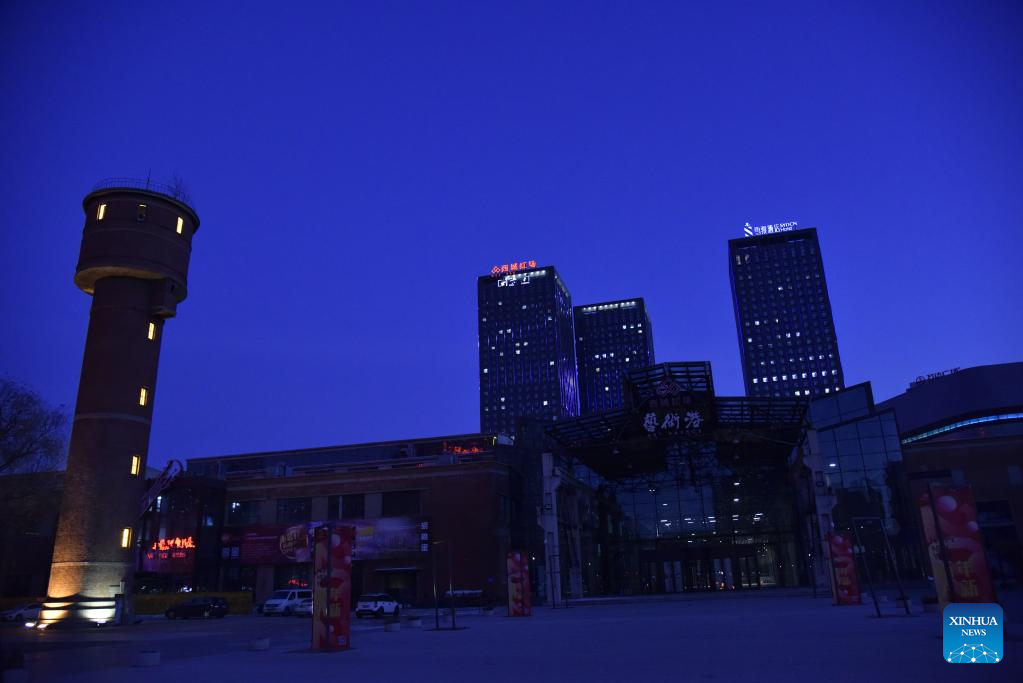
Tourists visit the Harbin Ice-Snow World in Harbin, northeast China's Heilongjiang Province, Jan. 12, 2022.
(Xinhua/Zhu Yue)
HARBIN, April 24 (Xinhua) -- Old-school workshops built with red bricks, sculptures made from rusty manufacturing components, and steam emanating from the chimney bear the imprints of the factory era of the Westred Square in Harbin, capital of northeast China's Heilongjiang Province.
"Westred Square is a masterpiece of creative design integrating industry and art," said Wang Limei, manager of Hongbo Business Group. In 2010, the company revamped the derelict Bauhaus-style hydrogen factory into an innovative business platform.
The Harbin Fashion Week has been hosted nine times in this public square, with routine art exhibitions held in workshop-turned galleries. The place is packed with trendy brands, folk cultures, cafes, and office spaces.
"We have been exploring ways to combine intangible cultural heritages and creative designs in a bid to build Harbin into a glamorous city," said Wu Minghui, chief engineer with Zhongjia Urban Construction and Design Co., Ltd.
As a prominent old industrial base in China, Heilongjiang recently launched a special plan, positioning creative design as its key emerging industry and aiming to become a highland of the area in Northeast Asia by 2030.
"The plan has encouraged us significantly," said Sun Jianbin, chief design officer of Heilongjiang Caige Industrial Design Co., Ltd. "The charisma of industrial design is in transforming cutting-edge technology to concrete productivity."
The plan has pointed out that creative design empowers industries such as green food, winter sports products, biomedicine and animation, said Tan Yuhong, the deputy head of the provincial publicity department.
Deemed China's "grain barn," Heilongjiang is a major rice production area of the country. Creative culture companies have injected inspiration and vitality into the province's agricultural products.
"An attractive appearance piques consumers' curiosity, ultimately stimulating their purchasing desire," said Zhou Yang, founder of Heilongjiang Guangwei Creative Design Co., Ltd. "Behind each design, there are countless brainstorming sessions."
Zhou added that through artistic packaging, Heilongjiang's natural and high-quality agricultural products have become more than just food items.
Heilongjiang currently has around 1,000 scholars and experts and 40,000 students majoring in design.
It is hoped that resources can be shared among colleges and universities to spur the innovation vitality and promote high-quality development of Heilongjiang's creative design industry, said Gong Liming, director of the advertisement department of Northeast Forestry University.
According to Tan's explanation to the recently unveiled plan, more than 200 million yuan (around 31 million U.S. dollars) of special funds will be allocated, with small and medium enterprises receiving an allowance in advance. The size of the industry's operating income is expected to surpass 20 billion yuan by 2030. ■

File photo taken on Dec. 26, 2021 shows a night view of Westred Square in Harbin, northeast China's Heilongjiang Province.
(Xinhua/Zhu Yue)

File photo taken on Dec. 26, 2021 shows ant-shaped sculptures at Westred Square in Harbin, northeast China's Heilongjiang Province.
(Xinhua/Zhu Yue)

File photo taken on Dec. 26, 2021 shows a workshop-turned gallery at Westred Square in Harbin, northeast China's Heilongjiang Province.
(Xinhua/Zhu Yue)



